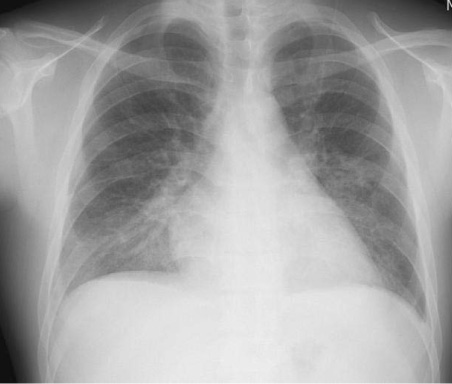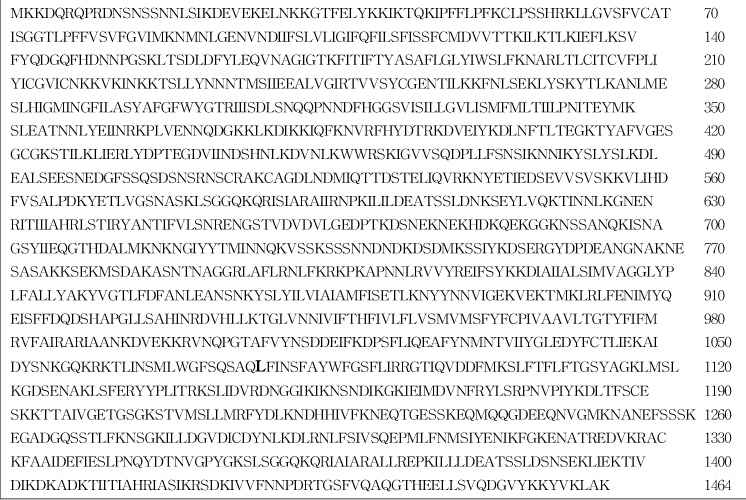Infect Chemother.
2008 Feb;40(1):52-57. 10.3947/ic.2008.40.1.52.
A Case of Chloroquine-resistant Plasmodium vivax Malaria Imported from Indonesia
- Affiliations
-
- 1Department of Internal Medicine, Inha University, College of Medicine, Incheon, Korea. mhchungid@paran.com
- 2Department of Molecular Parasitology, Center for Molecular Medicine, Samsung Biomedical Research Institute, Sungkjunkwan University School of Medicine, Suwon, Korea.
- 3Department of Parasitology, Inha University, College of Medicine, Incheon, Korea.
- 4Department of Internal Medicine, Hanyang University School of Medicine, Seoul, Korea.
- KMID: 1483478
- DOI: http://doi.org/10.3947/ic.2008.40.1.52
Abstract
- Resistance of falciparum malaria to antimalarial agents is prevalent in many areas, whereas chloroquine-resistant vivax malaria has been reported mainly around New Guinea since 1989. Concomitant with the spread of chloroquine-resistant P. vivax and increase in number of international travelers, imported cases of chloroquine-resistant vivax malaria in travelers returning from these areas has been reported. We experienced a case of chloroquine resistance P. vivax infection imported from Mangole Island, Indonesia. Its origin is confirmed not to be indigenous by the gene encoding analysis for the polymorphic region of apical membrane antigen-1 in P. vivax. Gene sequencing of the P. vivax mdr1 gene revealed only one substitution located at the codon 1076 (F1076L). The case was managed with oral quinidine with successful outcomes.
Keyword
MeSH Terms
Figure
Reference
-
1. Rieckmann KH, Davis DR, Hutton DC. Plasmodium vivax resistance to chloroquine. Lancet. 1989. 2:1183–1184.
Article2. Maguire JD, Sumawinata IW, Masbar S, Laksana B, Prodjodipuro P, Susanti I, Sismadi P, Mahmud N, Bangs MJ, Baird JK. Chloroquine-resistant Plasmodium malariae in south Sumatra, Indonesia. Lancet. 2002. 360:58–60.
Article3. Baird JK. Chloroquine resistance in Plasmodium vivax. Antimicrob Agents Chemother. 2004. 48:4075–4083.4. Patsoula E, Spanakos G, Sofianatou D, Parara M, Vakalis NC. A single-step, PCR-based method for the detection and differentiation of Plasmodium vivax and P. falciparum. Ann Trop Med Parasitol. 2003. 97:15–21.
Article5. Figtree M, Pasay CJ, Slade R, Cheng Q, Cloonan N, Walker J, Saul A. Plasmodium vivax synonymous substitution frequencies, evolution and population structure deduced from diversity in AMA1 and MSP1 genes. Mol Biochem Parasitol. 2000. 108:53–66.
Article6. Na BK, Lee HW, Moon SU, In TS, Lin K, Maung M, Chung GT, Lee JK, Kim TS, Kong Y. Genetic variations of the dihydrofolate reductase gene of Plasmodium vivax in Mandalay Division, Myanmar. Parasitol Res. 2005. 96:321–325.
Article7. Sá JM, Nomura T, Neves J, Baird JK, Wellems TE, del Portillo HA. Plasmodium viavx: allele variants of the mdr1 gene do not associate with chloroquine resistance among isolates from Brazil, Papua, and monkey-adapted strains. Exp Parasitol. 2005. 109:256–259.
Article8. Yi KJ, Chung MH, Kim HS, Kim CS, Pai SH. A relapsed case of imported tertian malaria after a standard course of hydroxychloroquine and primaquine therapy. Korean J Parasitol. 1998. 36:143–146.
Article9. Na DJ, Han JD, Cha DY, Song IK, Choi HW, Chung EA, Park CW, Choi JS. Imported tertian malaria resistant to primaquine. Korean J Intern Med. 1999. 14:86–89.
Article10. Han SH, Byun DW, Chu WS, Woo JH, Hong ST. A case of recurrent Malaria-imported infection. Korean J Infect Dis. 1991. 23:125–129.11. Collins WE, Jeffery GM. Primaquine resistance in Plasmodium vivax. Am J Trop Med Hyg. 1996. 55:243–249.
Article12. Foote SJ, Kyle DE, Martin RK, Oduola AM, Forsyth K, Kemp DJ, Cowman AF. Several alleles of the multidrug-resistance gene are closely linked to chloroquine resistance in Plasmodium falciparum. Nature. 1990. 345:255–258.
Article13. Wellems TE, Walker-Jonah A, Panton LJ. Genetic mapping of the chloroquine-resistance locus on Plasmodium falciparum chromosome 7. Proc Natl Acad Sci USA. 1991. 88:3382–3386.
Article14. Nomura T, Carlton JM, Baird JK, del Portillo HA, Fryauff DJ, Rathore D, Fidock DA, Su X, Collins WE, McCutchan TF, Wootton JC, Wellems TE. Evidence for different mechanisms of chloroquine resistance in 2 Plasmodium species that cause human malaria. J Infect Dis. 2001. 183:1653–1661.
Article15. Brega S, Meslin B, de Monbrison F, Severini C, Gradoni L, Udomsangpetch R, Sutanto I, Peyron F, Picot S. Identification of the Plasmodium vivax mdr- like gene (pvmdr1) and analysis of single-nucleotide polymorphisms among isolates from different areas of endemicity. J Infect Dis. 2005. 191:272–277.
Article16. Miller KD, Greenberg AE, Campbell CC. Treatment of severe malaria in the United States with a continuous infusion of quinidine gluconate and exchange transfusion. N Engl J Med. 1989. 321:65–70.
Article
- Full Text Links
- Actions
-
Cited
- CITED
-
- Close
- Share
- Similar articles
-
- A Case of Primaquine-Resistant Tertian Malaria
- Status of Plasmodium vivax Malaria in the Republic of Korea after Reemergence
- Imported tertian malaria resistant to primaquine
- Three cases of vivax malaria showing atypical clinical course
- The Effect of Halofantrine in the Treatment of 14 Cases of Chloroquine Resistant Imported Malaria



